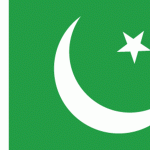 The trend of health problems in 2013 once again hinted towards an alarming fact that the country is facing extraordinarily heavy burden of both the communicable and non-communicable diseases.
The trend of health problems in 2013 once again hinted towards an alarming fact that the country is facing extraordinarily heavy burden of both the communicable and non-communicable diseases.
Pakistan has been facing double burden of diseases for the last few years yet the concerned authorities have not come up with success in devising a strategy to safeguard population from the infectious diseases and their epidemics.
Statistics reveal that the burden of communicable diseases like TB, malaria, dengue fever, typhoid, viral hepatitis, cholera and other infections could not be controlled in 2013 while a rising trend of non-communicable diseases like heart disease, stroke, diabetes, hypertension and cancer continued to haunt population last year.
Many health experts say that there is a need of developing strategies for the next year by keeping in mind the key public health issues of the previous years but it seems as the concerned authorities do not give attention to the statistics regarding rising trend of certain communicable and non-communicable diseases.
Epidemic tobacco use, deadly tuberculosis, the link between social factors and health, unequal access to health care, and a rise in chronic diseases such as heart disease, diabetes, hypertension and cancer in 2013 remained the issues to be resolved in Pakistan
The concerned authorities continued to make tall claims regarding improvement of primary healthcare services across the country in 2013 but it contributed a little in safeguarding population from a number of health threats.
Climate change, which continued to endanger health and food safety were among major health issues that needs to be given more attention. Experts say that Pakistan needs to invest a lot on research on most effective measures to protect health from climate change particularly in vulnerable populations such as women, children and elderly in the country.
Like the past years, the economic downturn also put ripple effects on health and social spending in Pakistan. A significant proportion of population in Pakistan remained affected badly by conflicts like terrorists’ activities and disasters in 2013 but the government authorities failed to invest sufficient resources to improve emergency medical care services in the country.
For the few years, health experts are of the view that to minimise the losses being caused by disasters, there is a need of developing trauma centres at least in all major cities of the country however almost no attention was given to the subject in 2013. Social inequities and injustice continued to kill people on a grand scale.
The important infectious diseases which hit Pakistan in 2013 and made headlines in the media like the past few years were ‘Gastro’, ‘Dengue fever’ and ‘Crimean-Congo Haemorrhagic Fever’.
Gastroenteritis and dengue fever hit population badly in various cities of Pakistan including Rawalpindi and Lahore in 2013 and thousands of patients of the infections were reported putting extra burden on public sector healthcare facilities yet the provinces, like the past years, allocated a little budget for prevention and control of the said infections in time.
Health experts say that the provincial health departments particularly in Punjab should allocate a separate additional budget well in time for prevention and control of dengue fever in 2013 to avoid another possible outbreak of the disease.
Majority of health experts are of the view that the concerned government authorities should work out a strategy in 2014 to minimise the burden of both the communicable and non-communicable diseases after proper assessment of the trends of health threats in 2013 and media campaigns should be intensified to control the epidemics that hit population last year.
Source: The News

















